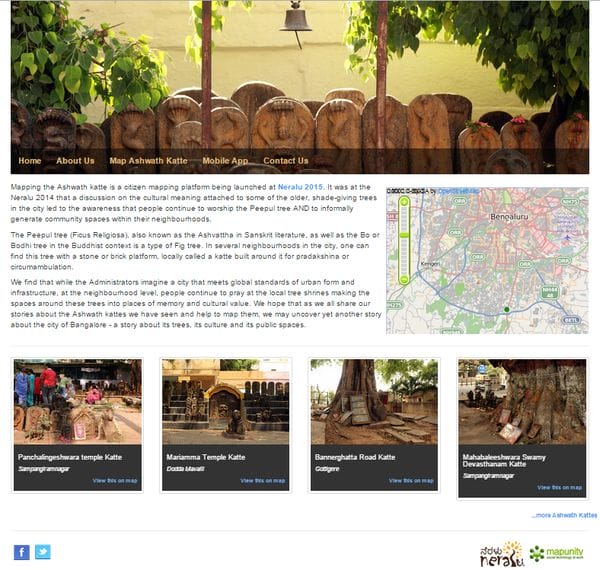The focus at Neralu this year was on Trees & Public spaces – including ashwath kattes, neighbourhood parks and streets. Alongside that, MapUnity developed an online platform where people could upload the location of their neighbourhood kattes, with photographs and a story. Please do log on to: Mapping the Ashwath katte if you have something to share about your own neighbourhood katte or one you’ve seen elsewhere.
We hope that as we all share our stories about the Ashwath kattes we have seen and help to map them, we may uncover yet another story about the city of Bangalore – a story about its trees, its culture and its public spaces.

If you can, do share the link on FACEBOOK so that more and more people can add their kattes to the map! If you would like to read the research paper on which this work is based, click here: The practice of tree worship and the territorial production of urban space in an Indian neighbourhood.